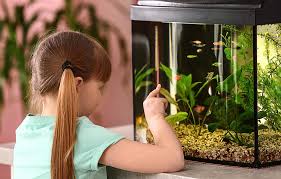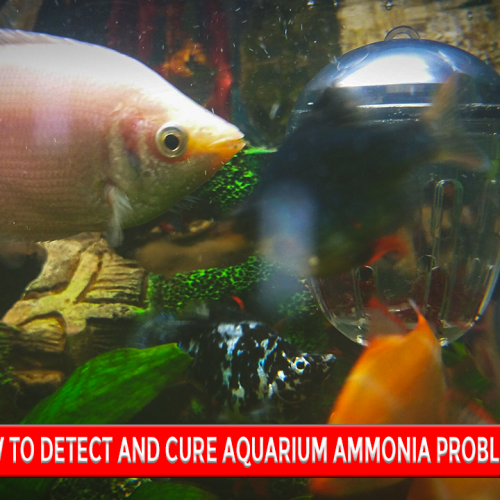Fishkeeping for Kids to Teach Responsibility
Fishkeeping is a very entertaining and educational hobby, suitable for kids. It offers an opportunity to learn about the environment, biology, and responsibility, all while having fun taking care of beautiful aquatic pets. This article will look into how fishkeeping teaches responsibility, how to get started, and the benefits it brings for kids and their families.
Why Fishkeeping is Ideal for Kids
Fishkeeping is not just a hobby but a means of learning and development. Here are some reasons why it is great for kids:
1. Teaches Responsibility
Caring for fish requires daily activities like feeding and checking the water quality, as well as cleaning the tank periodically. Such activities teach children the value of consistency and responsibility.
2. Educational Benefits
Fishkeeping teaches hands-on biology, chemistry, and environmental science. Children learn about ecosystems, the nitrogen cycle, and behavior of different fish species.
3. Cultivates Empathy
Taking care of living creatures fosters empathy and compassion in kids. Watching their fish grow and thrive creates a sense of achievement and care.
4. Calming and Stress-Relieving
Watching fish swim is soothing to children. It makes them relax, helps improve concentration, and offers peace of mind, which the fast-paced world needs these days.
Setting Up Fishkeeping for Kids
1. Tank Selection
Select a small aquarium with a capacity of 10-20 gallons, so it’s easy to maintain yet big enough to offer stable fish living conditions. Tanks of small capacity are not very easy to maintain as water quality changes fast.
2. Beginner Fish Selection
Some fish are easier for beginners than others, including:
- Betta Fish: They are low-maintenance and colorful.
- Guppies: They are hardy and easy to care for and available in different colors.
- Zebra Danios: Active and tolerant.
- Mollies: Peaceful and excellent for community tanks.
3. Easy Aquarium Setup
Place the tank with some basic decorations, plants, and a good filtration system. Ensure the water is treated and at the right temperature for the chosen species.
4. Teach Care Routines
Create a checklist for daily feeding and weekly cleaning. Encourage kids to monitor fish behavior, tank conditions, and water parameters.
5. Supervise and Guide
While kids can handle most tasks, adult supervision ensures they follow proper care guidelines and avoid harming the fish.
Benefits of Fishkeeping for Kids
 Improves Focus and Patience
Improves Focus and Patience
Fishkeeping encourages children to be observant and patient, as results like a thriving tank take time and effort.
Builds Problem-Solving Skills
When faced with challenges such as algae overgrowth or sick fish, kids learn to research solutions, fostering problem-solving skills.
Encourages Routine Building
Maintaining a schedule for feeding, cleaning, and water changes helps kids develop organizational skills and discipline.
Strengthens Family Bonds
Fishkeeping can become a shared family activity, offering opportunities to bond over tank maintenance and fish selection.
Common Challenges and How to Overcome Them
 Overfeeding Fish
Overfeeding Fish
Kids may feed their fish too much out of excitement. Teach them to feed small amounts twice a day and explain the dangers of overfeeding, such as dirty water and health issues.
Maintaining Water Quality
Teach kids on the importance of regular water changes and using a water testing kit to check parameters like pH and ammonia levels.
Choosing the Wrong Fish
Educate children to choose compatible fish with each other and the tank setup. Avoid the aggressive or high-maintenance fish for beginners.
Conclusion
Keeping fish is an excellent way to teach children responsibility, patience, and how to care for living things. The hobby combines education with fun, with endless possibilities for growth as well as bonding with the family. If you start small and help your kids in their fishkeeping journey, they will learn essential life skills while enjoying beauty beneath their surface.
FAQs (frequently-asked questions)
Guppies, mollies, bettas, and zebra danios are all great choices for beginners as they are very hardy and low-maintenance.
Weekly partial water changes and monthly deep cleaning of the tank are usually all that is needed.
Older kids can do just about everything, but parents should supervise young children.
They are ideal for small space living, such as in an apartment, as they take up minimal space, but they also provide calming presences.
You can use pre-portioned feeding containers or instruct them to feed only what the fish can consume in 2-3 minutes.




